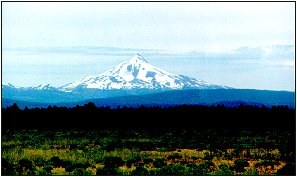












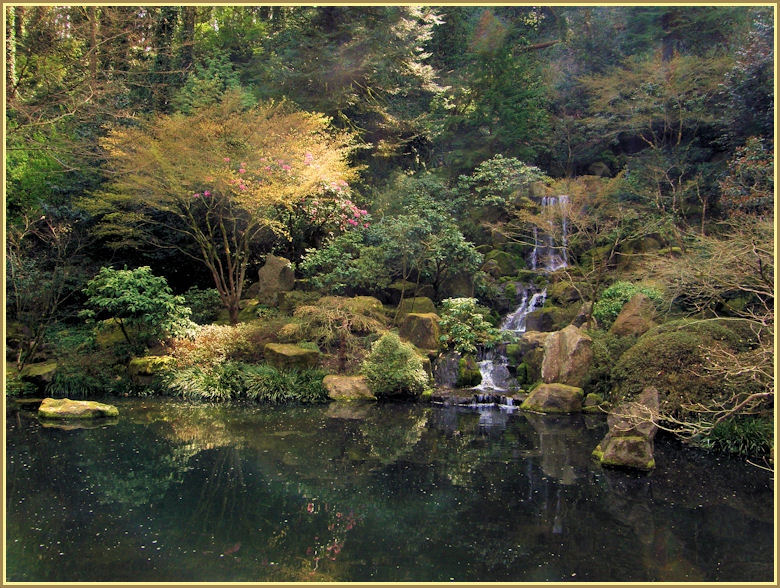




More of Don's
photo series.
Mount Jefferson
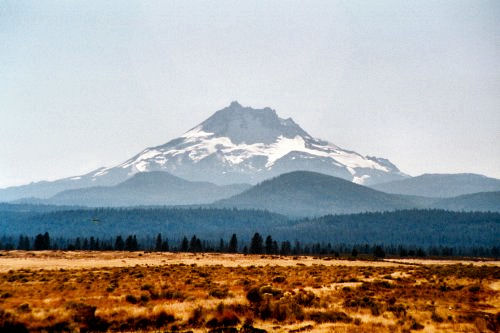
Mount Jefferson as seen from the northwest in October, before the first snowfall of the season.
Mount Jefferson apparently was so named by Lewis and Clark; while encamped at the confluence of the Willamette and Columbia Rivers, they viewed the mountain and named it after the president of the United States who had sent them on their journey.
Personally, I don't think you can see Mount Jefferson from the confluence of those two rivers; until I actually see Mount Jefferson from there, I will consider that story apocryphal. From near the confluence, maybe; they might have climbed one of the high hills of what is now Portland, and they might have seen Mount Jefferson from there, but from the confluence — doubtful.
[Two years later.] Now I am not so sure. I was driving along Washington Hwy 14, headed east from downtown Vancouver, the other day. It was a nice clear day, and I saw the tip of Mt. Jefferson from there. The highway at that spot is a few feet above the river, about maybe ten miles from the confluence, but I did see ol' Jeffy, so maybe the story is correct.
[One year later.] I am standing near the confluence of the Willamette and Columbia Rivers, in the northwest corner of Portland, at what is now Smith and Bybee Lakes. This is very near where Lewis and Clark camped that night two hundred years ago. Mount Jefferson cannot be seen from here, but Mount Hood can; if there were no trees, maybe Mount Jefferson would be visible. (The photo does not show either of these mountains, but Hood was visible from near here.) Two hundred years ago there probably were no trees here, because the Columbia was a wild river indeed at that time. So, I give up. I am hereby officially accepting it as fact that Lewis and Clark did see Mount Jefferson from this spot. (The actual spot is not known, but it is near here.)
Very near where Lewis and Clark spotted and named Mount Jefferson.
Mt. Jefferson from the southeast.
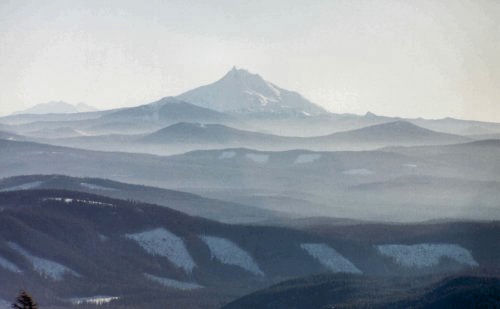
Mount Jefferson as seen from almost due north, Timberline on Mount Hood. The large mountain in the background at the left is actually a group of mountains, the Three Sisters and Broken Top, seventy-odd miles to the south.
Why are there a Mount Washington, Mount Adams, Mount Jefferson, Mount Wilson, Mount Jackson, etc., in the Cascade Range? For a short time the Cascades were called "The Presidents' Range" and mountains were named after presidents of the U.S. Fortunately, this practice died out.
If mountains are going to be named after presidents, why did not our first president, George Washington, have a grand mountain such as Rainier, rather than a puny one, named after him? Mount Washington (below) isn't even 9,000' tall.
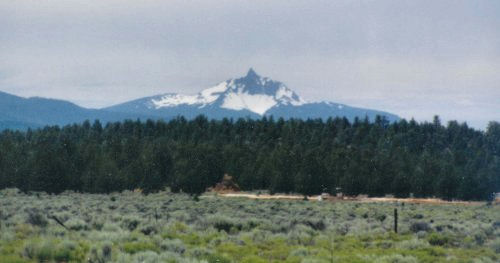
In my opinion, the Indian names of the mountains should be officially restored, in those cases where an Indian name is known. (So far, I have not been able to locate any Indian names of Mount Jefferson.)[Three years later: A gentleman from Central Oregon informs me that the Indian name of Mt. Jefferson was Seekseekqua. I will see if I can further varify that information, but I assume that he is correct.][Yes, the gentleman is correct.]
©D.L. Mark 1997
Cascade Peaks Index | Next Higher | Next Lower | Special Cases

